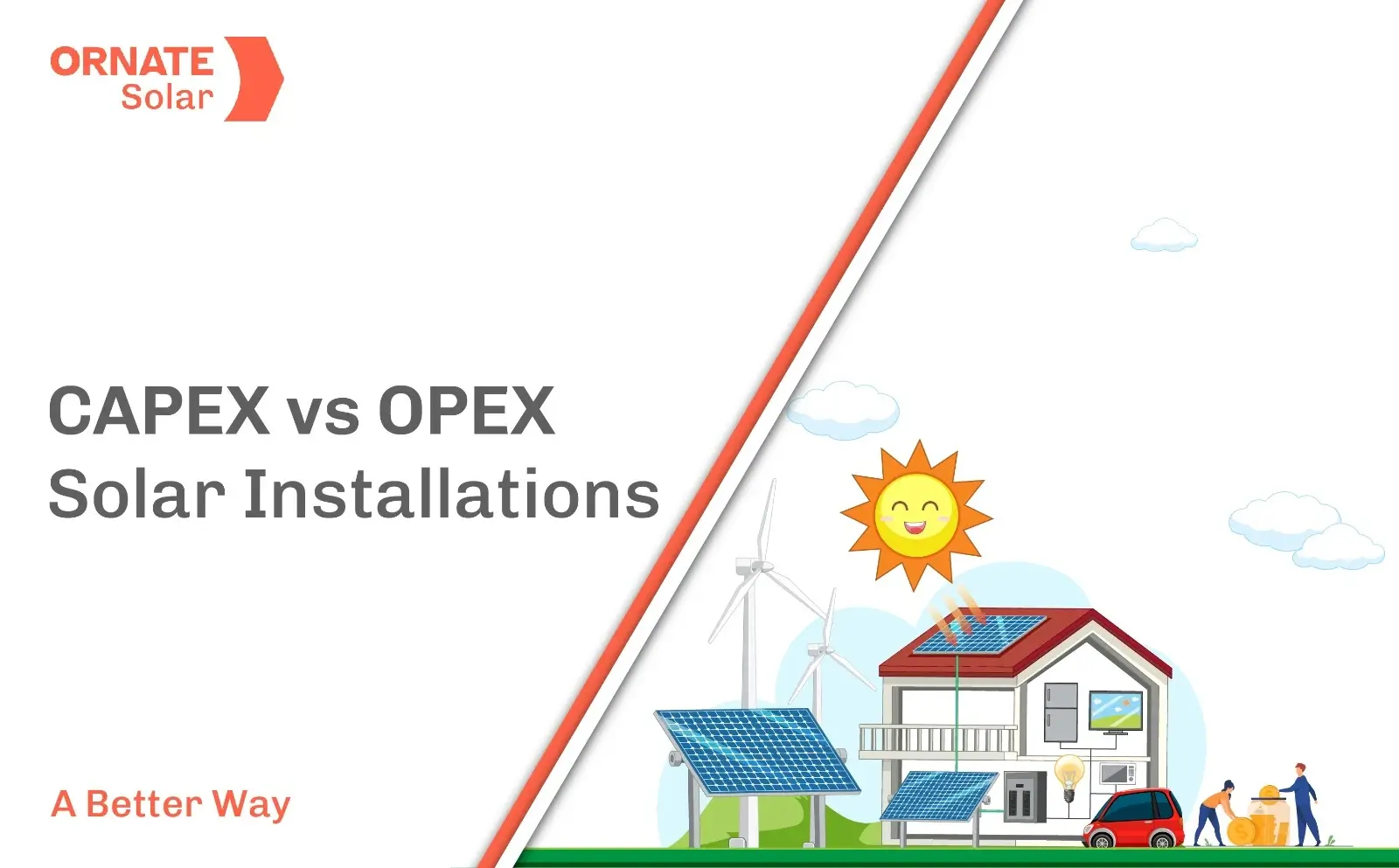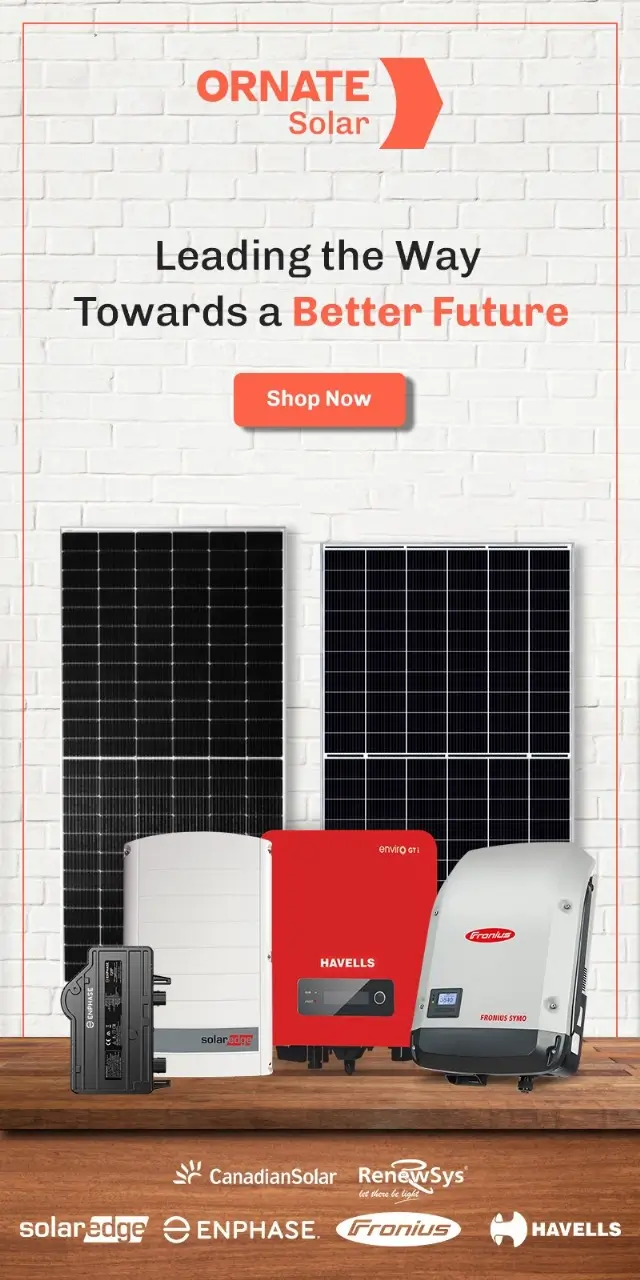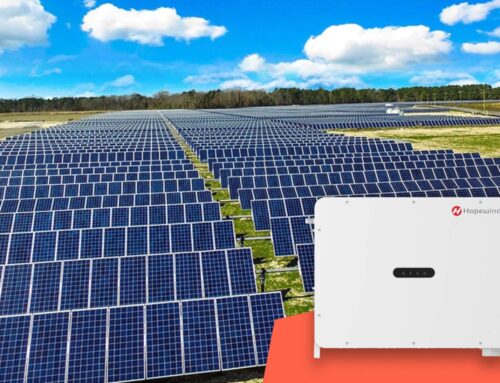

If you plan to go solar, you have two financing options- make the upfront investment or let a third party invest in the system.
These are the CAPEX and OPEX solar models, each having its pros and cons. But one thing remains common- whether you own your system or not, switching to solar will help you slash your monthly energy expenses by at least 70-80%!
But how do you decide which type of system is right for you? Let’s take a deep dive into CAPEX and OPEX models to understand.
CAPEX Solar Model
In the CAPEX or Capital Expenditure model, the consumer pays for the equipment, installation, operation, and maintenance of the solar energy system. In short, the consumer bears the capital expenditure of the solar installation.
While cost-intensive, the CAPEX model gives the consumer complete rights to their solar asset. This right comes with tax and depreciation benefits along with the ability to send the excess energy back into the grid and be compensated for it.
Consumers also have the option of availing a solar loan, which slashes the financial burden of investing in solar without compromising on the benefits.
The CAPEX model is for those who have the required capital to make the full investment in solar. With energy savings, consumers can recover this initial investment within 5-6 years.
Advantages of CAPEX
- Complete ownership of the system, thus access to tax benefits, government subsidies, and rebates
- Faster return on investment
- Full protection against rising electricity tariffs for at least 25 years.
Disadvantages
- High initial investment
- Since the consumer has complete rights to the plant, they also have to bear the risks and uncertainties involved
OPEX Solar Model
OPEX or Open Expenditure shifts the responsibility of the solar plant to a third party and makes up for the drawbacks of CAPEX installation.
A consumer who wants to switch to clean energy but doesn’t have the capital ready to make the transition can ask a Renewable Energy Service Company (RESCO) to set up a solar plant.
The consumer provides the space, and the developer invests in the equipment, installation, commissioning, and maintenance of the plant. This type of installation is also called a land lease model.
What does the consumer get out of it? Cheaper and risk-free electricity!
The consumer enters into a Power Purchase Agreement (PPA) with the solar developer for a fixed tenure (between 15-25 years). During this period, the developer will provide them with energy at a negotiated tariff, which would be cheaper than grid power.
Once the PPA expires, the rights of the solar plant get transferred to the consumer at zero cost.
Advantages of OPEX
- The consumer only pays for the electricity
- The investment and performance risk is borne by a third-party
- The developer takes care of the Operations and management of the plant.
Disadvantages
- The developer avails the tax benefits and rebates
- Longer breakeven period
- The consumer has no control over the electricity tariff.
Comparing CAPEX and OPEX Solar Model
| Category | CAPEX | OPEX |
|---|---|---|
| Investment | Consumer makes 100% Investment | Consumer only pays for the electricity |
| Ownership Rights | Consumer has full ownership | Third Party Developer has the rights |
| Electricity Tariff | Reduced tariff | Tariff decided by Developer |
| Operation and Maintenance | Consumer is responsible for O&M | Developer is responsible for O&M |
| Payback period | Shorter Payback period | Longer payback period |
| Tax benefits and Govt. Rebates | Consumers avails the benefits | Developer avails the benefits |
How to Choose the Right Model?
Consider the following factors before the big decision:
1. Your Budget and Financial Resources
Your biggest consideration when deciding between OPEX and CAPEX models should be financing. If you are prepared to make the capital investment for solar installation, then the CAPEX model is right for you. This investment can also be in the form of EMI payments or a solar loan.
But, if the aim is to decarbonize without investing money into solar, and you have the roof space to set up a solar plant, then the OPEX model is best.
2. Risk and responsibility appetite
Large-sized solar plants, installed by businesses, often pose a performance risk as solar generation can be affected by multiple factors such as location, panel orientation, weather conditions, product quality, etc.
Moreover, they also require regular maintenance. If you are prepared to shoulder this risk and responsibility then the CAPEX model is right for you. If not, then it’s better to let a third-party developer do the same.
3. Ownership Rights
Owning the rights to the solar asset comes with certain benefits. For example, commercial and industrial solar installations can avail up to 40% accelerated depreciation on their solar plant.
CAPEX installations allow you to avail such benefits while the OPEX model does not.
About Ornate Solar
Ornate Solar is one of the leading solar companies in India with over 10 years of experience in the industry. We have partnered with the best-in-class global solar brands to provide you with a trustable, affordable, and reliable range of solar panels, inverters, and solar accessories.
We have also developed India’s first Integrated InRoof system. Ornate InRoof is a roof made out of solar panels, which is leak-proof and looks aesthetically pleasing.
If you are exploring solar solutions, reach out to us at 18002026252 to discuss your options.











Simple & clear clarification capex & opex
Great breakdown of the CAPEX and OPEX solar models! Choosing between them depends on your budget, risk tolerance, and long-term goals. While CAPEX offers ownership and tax benefits, OPEX provides a more affordable, hassle-free entry into solar. Both can significantly cut energy costs—definitely a smart investment for sustainability!
I have about 4 acre of land at rudrapur , dist -udham singh nagar uttarakhNd. I want to setup solar plant , how can you help me ?
Hello Rahul, thank you for connecting with us. Kindly share your contact details, and our sales representative will help you better.
Also, you can get in touch with us @ 011 4353 6666
I am having about 12.5 acres of land at Gudibanda Village Gudibanda mandal Anantapur district A P. I want to install in it opex solar. I want to know whether it is possible to go for an opex solar model in this small piece of land Or how much of land is required to set up this type.Our place is very hot. I am having confident that it is worthy.